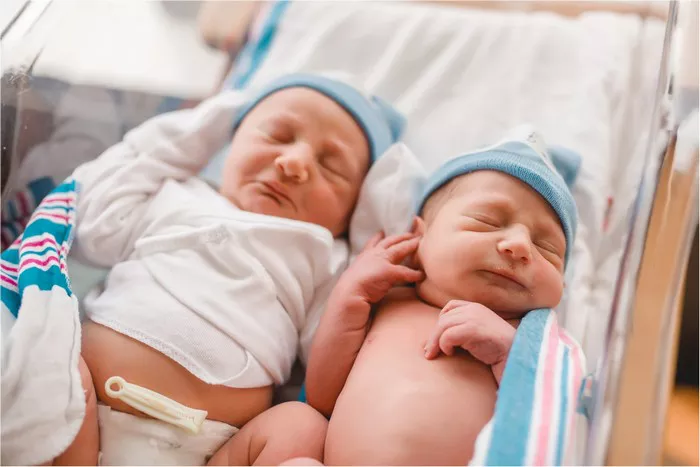The umbilical cord is a vital connection between a mother and her baby during pregnancy, supplying nutrients and oxygen while removing waste. After birth, this cord is cut, leaving a small stump on the baby’s abdomen. This stump requires special care to heal properly and prevent infection. Understanding what a newborn should wear during this delicate period is crucial for ensuring their comfort and health.
The Importance of Proper Umbilical Cord Care
Proper care of the umbilical cord stump is essential to avoid complications such as infections. The stump typically dries up and falls off within one to three weeks after birth. During this time, it is important to keep the area clean, dry, and free from irritation. The choice of clothing plays a significant role in this process.
Choosing the Right Clothing for a Newborn
1. Loose-Fitting Garments
Loose-fitting clothes are ideal for newborns with healing umbilical cord stumps. Tight clothing can irritate the stump and slow down the healing process. Garments such as loose onesies, gowns, and soft cotton shirts are excellent choices. These allow air to circulate around the stump, aiding in the drying process.
2. Avoiding Waistbands and Tight Diapers
Clothing with waistbands or tight-fitting diapers can put pressure on the umbilical cord stump. Instead, opt for diapers that are designed to sit below the belly button or have a cut-out section to avoid contact with the stump. This reduces the risk of irritation and helps keep the area dry.
3. Natural, Breathable Fabrics
Natural fabrics such as cotton are highly recommended for newborns. These materials are breathable, soft, and less likely to cause skin irritation. Synthetic fabrics, on the other hand, can trap moisture and heat, which can lead to discomfort and potential infection.
4. Layering for Temperature Control
Newborns have delicate temperature regulation systems, so layering their clothing is a good practice. However, ensure that the layers are not too tight around the umbilical cord area. Using a combination of light layers can keep your baby warm while allowing for easy adjustments.
Specific Clothing Options for Newborns
1. Onesies
Onesies are a popular choice for newborns due to their ease of use and comfort. When choosing onesies, look for those with snap closures that do not press against the umbilical cord stump. Some onesies are designed specifically for newborns with healing cords, featuring an open or adjustable front.
2. Kimono-Style Tops
Kimono-style tops wrap around the baby’s body and are tied at the side, away from the umbilical cord area. These tops are gentle on the healing stump and offer easy access for checking and cleaning the area.
3. Gowns
Gowns are excellent for nighttime and naptime as they provide easy diaper access without disturbing the umbilical cord area. Look for gowns with elastic bottoms that can be gently lifted over the baby’s legs.
4. Diapers
Choosing the right diaper is crucial. Many brands offer newborn diapers with a special cut-out for the umbilical cord stump. These diapers sit lower on the waist, preventing irritation and promoting healing.
Dressing Techniques and Tips
1. Fold Diapers Below the Stump
If you do not have access to diapers with a cut-out, simply fold down the front of the diaper to keep it below the umbilical cord stump. This technique helps prevent the diaper from rubbing against the healing area.
2. Keep the Area Dry
Moisture can slow down the healing process and increase the risk of infection. After a bath or diaper change, ensure the umbilical cord area is thoroughly dried. Use a clean, soft cloth to gently pat the area dry.
See Also: What to Do When Your Newborn Won’t Sleep at Night
3. Avoid Overdressing
Overdressing can cause sweating, which can affect the umbilical cord stump. Ensure your baby is comfortably dressed according to the ambient temperature, and check for signs of overheating such as sweating or flushed skin.
4. Monitor for Signs of Infection
While dressing your baby, routinely check the umbilical cord stump for signs of infection. Symptoms include redness, swelling, foul odor, or discharge. If you notice any of these signs, consult your pediatrician immediately.
Common Concerns and FAQs
1. How Often Should I Change My Baby’s Clothes?
It’s advisable to change your baby’s clothes whenever they become soiled or wet. Clean, dry clothing helps maintain a healthy environment for the healing umbilical cord stump.
2. Can I Use Lotions or Powders Near the Stump?
It is generally recommended to avoid applying lotions, powders, or any topical substances near the umbilical cord stump. Keeping the area dry and clean is usually sufficient.
3. What If the Stump Gets Wet?
If the umbilical cord stump gets wet, gently pat it dry with a clean, soft cloth. Avoid rubbing the area to prevent irritation.
4. When Should I Seek Medical Advice?
Seek medical advice if you notice signs of infection, if the stump has not fallen off within three weeks, or if there is excessive bleeding from the area.
Caring for Your Newborn’s Umbilical Cord Stump
The healing of the umbilical cord stump is a natural process that requires minimal but diligent care. By choosing appropriate clothing and following these guidelines, you can help ensure your newborn’s comfort and health during this critical period.
Conclusion
Dressing a newborn while the umbilical cord heals involves selecting loose-fitting, breathable garments and taking steps to keep the area clean and dry. Understanding the importance of proper clothing and care techniques can significantly contribute to the healthy healing of your baby’s umbilical cord stump. Always monitor for signs of infection and consult your pediatrician with any concerns to ensure the best care for your newborn.


